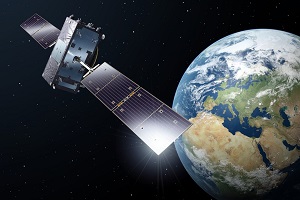Dr Kevin Curran, Senior IEEE Member and group leader for the Ambient Intelligence Research Group, believes that as we increasingly engross ourselves in cyberspace, wasting time by driving a car manually will seem ridiculous – but we need the right infrastructure if we are to make the best use of our time.
Despite recent failings of several driverless car models, many people still believe that they will supersede those driven by humans as much more can be accomplished online in the time it takes to get from A to B. When society will finally cede control to a machine is unclear, but driverless vehicles will only succeed when there is communication between vehicles and everything in its surroundings.
By allowing smart cars to become more integrated with national intelligent transport infrastructures and systems, vehicles will be able to operate safely and efficiently. The infrastructure and associated systems will include satellite navigation and traffic signal control systems, so that vehicles know when to stop, slow down and speed up as well as identify hazards in good time. This basic communication will ensure better traffic management and drastically reduce the number of accidents.
Ultimately, the roads beneath us will communicate with smart cars, most likely through indestructible sensors embedded within the road. They could be activated during road maintenance or in emergencies, alerting vehicles individually to slow down or stop, example. Such technological advances might put an end to the use of traffic flow cones during road-side construction.
Many uses for vehicle communications
When vehicles can communicate with their surroundings, the connectivity in smart cars will become part of the national mandatory checks (known as the MOT in the UK) to test their 4G/Wi-Fi is active and working properly. As well as travelling safely, this will enable cars to receive firmware and software updates and synchronisation over the local home network.
By uploading vehicles’ telemetry data, cities can optimise traffic management in the area around them. Therefore, ad hoc car-to-car networks, communication between vehicles and road sensors and satellites will be crucial components of future mobile networks. This could mean a significant portion of the internet will be consumed by vehicle communications.
By connecting smart cars to local parking information, weather reports and other environmental knowledge, the car will be better prepared for the journey. That means finding the closest available parking space quickly – getting vehicles off the road reduces congestion – as well as matching how it is driven to road conditions.
Car to car (C2C) technology can be used in sensors to communicate the time a trip takes, and help fleet management systems handle logistics, scheduling and routine vehicle maintenance. Enabling more efficient driving should reduce fuel costs.

C2C can also help with unforeseen conditions: if there is a crash the on-board technology could automatically send vital details to the emergency services, such as time of the collision and GPS location – potentially saving crucial moments in life-threatening situations.
Where are we now?
Some prototypes are already beginning to communicate with the grid, the cloud and other vehicles, so it will not be long before smart cars, by default, will keep an activity log for service and debugging. This will mean cars will know when they need to be serviced or repaired and be able identify any issues and provide data to mechanics, saving time and reducing the number of broken down vehicles on the road.
However, privacy will be an issue – many parties seek to track our movement, from the insurance company, to the car maker and in some circumstances police authorities. Questions around who owns the data and who should have access to it need to be addressed before driverless cars can become ubiquitous.
Glimpses of future intelligent infrastructures can be seen in initiatives such as one in Birmingham, where IBM is involved in the analysis of data to better understand parking patterns and manage congestion. It deployed ultra-low-power wireless sensors embedded roads combined with data from video cameras and GPS updates from public transport. Drivers are offered an accompanying app to receive real-time availability and prices for parking. In the future, smart cars will integrate with infrastructure and hundreds more data points.
To achieve scale, driverless cars need to be integrated with national intelligent transport infrastructures and systems, but this having the correct infrastructure in place is a pre-requisite.
The Internet of Vehicles (IoV) will pose stricter latency and reliability requirements; only fast networks, such as 5G, can support millisecond-level latencies. We’re not far from driverless vehicles sharing our roads and one day dominating them, but first we need to invest in the infrastructure.
The author of this blog is Dr Kevin Curran, IEEE
Comment on this article below or via Twitter: @IoTNow_OR @jcIoTnow










